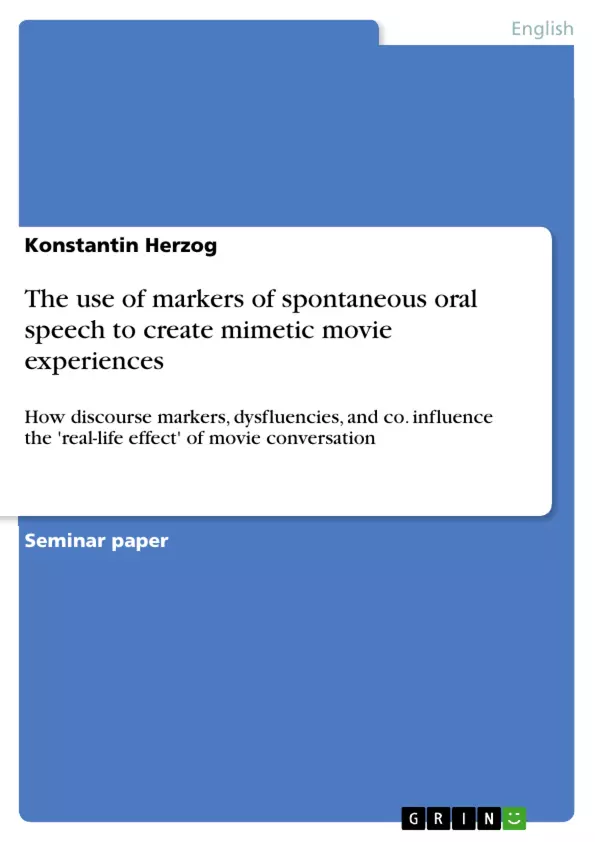This text tries to explore the why? and how? of movie dialogues close to reality. It deals with a close transcript of an 8-minute scene of "Vicky Christina Barcelona" and corpus statistics based on transcripts of this movie and of "He's just not that into you." It offers interesting aspects on the function of backchannels and hesitators not only in movie discourse.
Inhaltsverzeichnis (Table of Contents)
- Introduction:
- The data:
- Analysis of VCB:
- Excerpt from the first scene
Zielsetzung und Themenschwerpunkte (Objectives and Key Themes)
The purpose of this paper is to explore how the use of markers of unplanned oral speech in movie dialogue contributes to creating a realistic, mimetic experience for the audience. The paper specifically examines discourse markers, dysfluencies, and backchannels, comparing two films to identify how these markers impact the perception of spontaneity and authenticity in conversation.
- The impact of markers of spontaneous oral speech on the 'real-life effect' of movie conversation.
- The use of discourse markers, dysfluencies, and backchannels in creating a realistic experience for the audience.
- The comparison of two films, "Vicky Christina Barcelona" and "He's Just Not That Into You", to assess the presence and influence of these markers.
- The analysis of specific examples of these markers in the selected scenes, exploring their semantic and pragmatic roles.
Zusammenfassung der Kapitel (Chapter Summaries)
The introduction provides a brief overview of the use of dialogue in film, highlighting the importance of creating a sense of realism through the use of spontaneous speech. The paper argues that markers of unplanned oral speech, such as discourse markers, dysfluencies, and backchannels, can enhance the mimetic effect of movie conversation.
The "data" section introduces the two films selected for analysis: "Vicky Christina Barcelona" and "He's Just Not That Into You." It compares their genre, storyline, and linguistic features, providing context for the subsequent analysis.
The analysis of VCB delves into a specific excerpt from the first scene, examining the use of discourse markers, dysfluencies, and backchannels in the first five turns of dialogue. It explores the specific roles and functions of various markers, such as ellipsis, interjections, and backchannels, providing insights into their contribution to creating a sense of spontaneity and naturalness.
Schlüsselwörter (Keywords)
This paper focuses on the use of markers of spontaneous oral speech in movie dialogue, specifically exploring discourse markers, dysfluencies, and backchannels. It examines their impact on the 'real-life effect' of movie conversation, analyzing their semantic and pragmatic functions within the context of two selected films: "Vicky Christina Barcelona" and "He's Just Not That Into You".
- Citar trabajo
- Konstantin Herzog (Autor), 2011, The use of markers of spontaneous oral speech to create mimetic movie experiences, Múnich, GRIN Verlag, https://www.grin.com/document/175154



